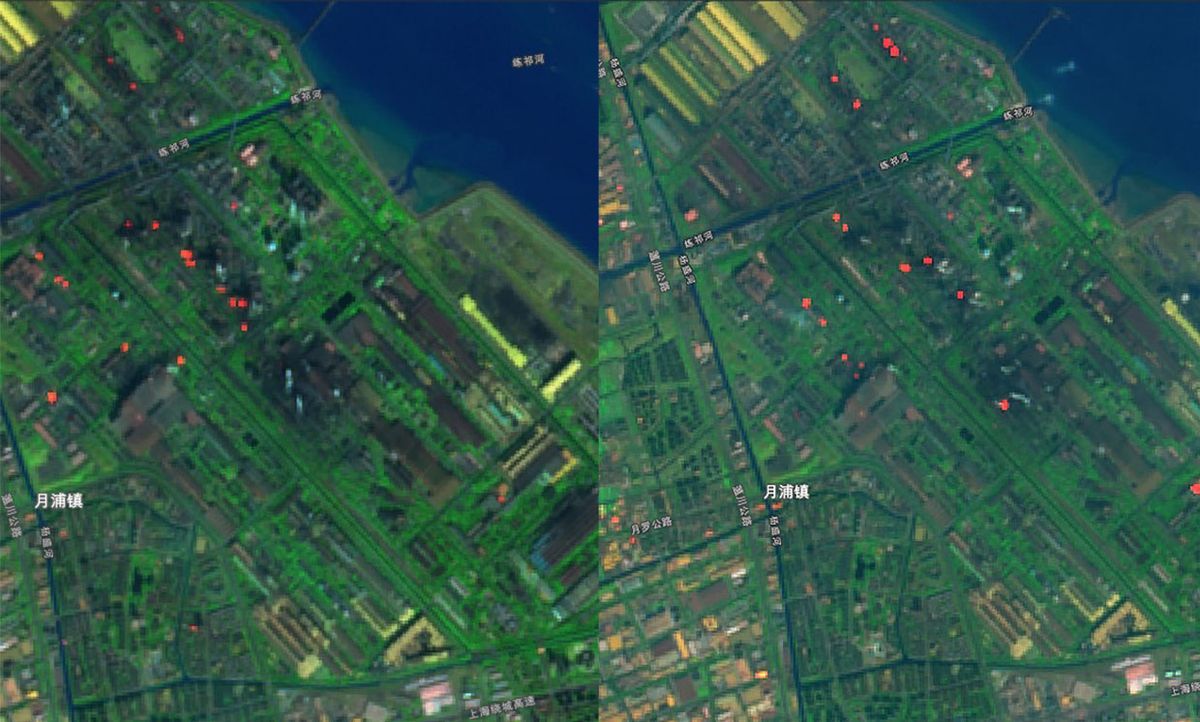Researchers on WeBank’s AI Moonshot Team have taken a deep learning system developed to detect solar panel installations from satellite imagery and repurposed it to track China’s economic recovery from the novel coronavirus outbreak.
This, as far as the researchers know, is the first time big data and AI have been used to measure the impact of the new coronavirus on China, Haishan Wu, vice general manager of WeBank’s AI department, told IEEE Spectrum. WeBank is a private Chinese online banking company founded by Tencent.
The team used its neural network to analyze visible, near-infrared, and short-wave infrared images from various satellites, including the infrared bands from the Sentinel-2 satellite. This allowed the system to look for hot spots indicative of actual steel manufacturing inside a plant. In the early days of the outbreak, this analysis showed that steel manufacturing had dropped to a low of 29 percent of capacity. But by 9 February, it had recovered to 76 percent.
The researchers then looked at other types of manufacturing and commercial activity using AI. One of the techniques was simply counting cars in large corporate parking lots. From that analysis, it appeared that, by 10 February, Tesla’s Shanghai car production had fully recovered, while tourism operations, like Shanghai Disneyland, are still shut down.

Moving beyond satellite data, the researchers took daily anonymized GPS data from several million mobile phone users in 2019 and 2020, and used AI to determine which of those users were commuters. The software then counted the number of commuters in each city, and compared the number of commuters on a given day in 2019 and its corresponding date in 2020, starting with Chinese New Year. In both cases, Chinese New Year saw a huge dip in commuting, but unlike in 2019, the number of people going to work didn’t bounce back after the holiday. While things picked up slowly, the WeBank researchers calculated that by 10 March 2020, about 75 percent of the workforce had returned to work.
Projecting out from these curves, the researchers concluded that most Chinese workers, with the exception of Wuhan, will be back to work by the end of March. Economic growth in the first quarter, their study indicated, will take a 36 percent hit.
Finally, the team used natural language processing technology to mine Twitter-like services and other social media platforms for mentions of companies that provide online working, gaming, education, streaming video, social networking, e-commerce, and express delivery services. According to this analysis, telecommuting for work is booming, up 537 percent from the first day of 2020; online education is up 169 percent gaming is up 124 percent; video streaming is up 55 percent; social networking is up 47 percent. Meanwhile, e-commerce is flat, and express delivery is down a little less than 1 percent. The analysis of China’s social media activity also yielded the prediction that the Chinese economy will be mostly back to normal by the end of March.
Tekla S. Perry is a senior editor at IEEE Spectrum. Based in Palo Alto, Calif., she's been covering the people, companies, and technology that make Silicon Valley a special place for more than 40 years. An IEEE member, she holds a bachelor's degree in journalism from Michigan State University.



